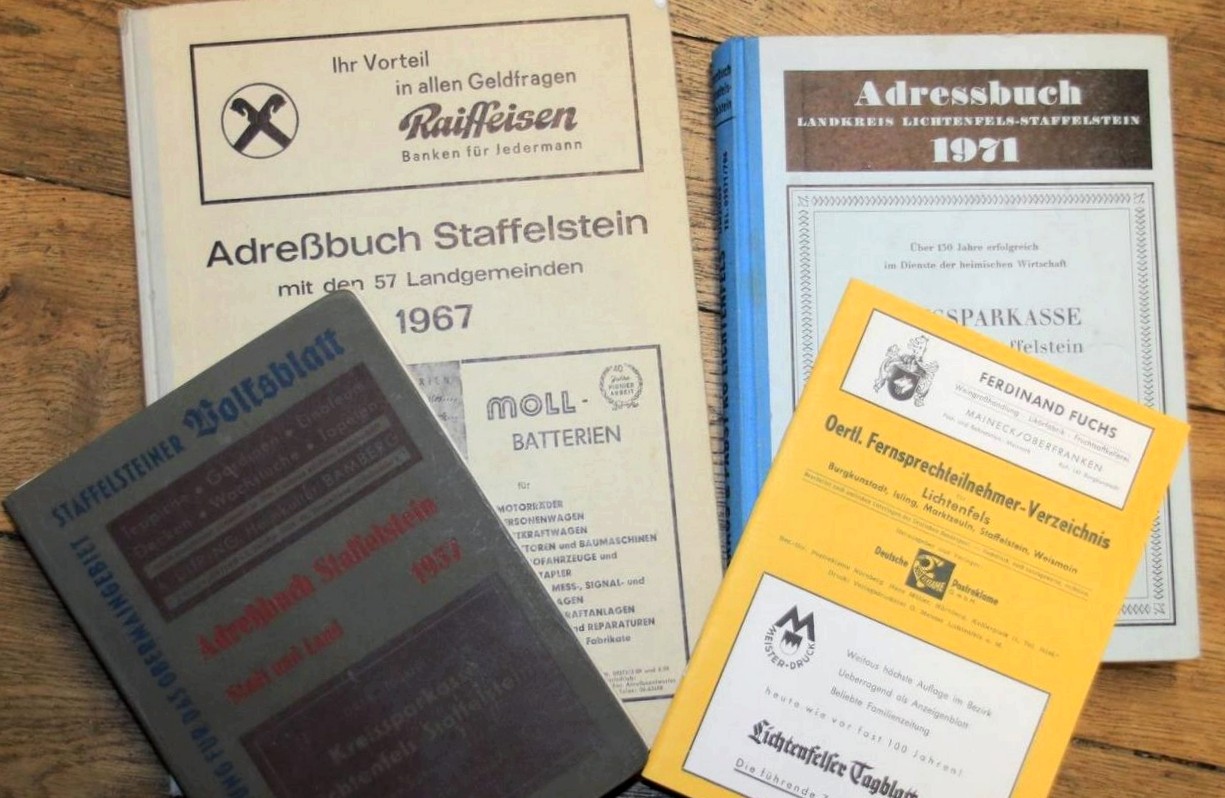Data from analog staffelsteiner annals

It’s a real pleasure to delve into old address and phone books. In the analog age, when data was not yet protected, it was easy to learn about his fellow human beings. About whether they were housemaid, widow, strabenmeister, oberlehrer or melkermeister. We have made this spab and the lichtenfels-staffelsteiner telephone book of 1950 as well as the staffelsteiner address book of 1957 and 1967 and the lichtenfels-staffelsteiner address book of 1971 durchgeblattert, which originate from the collection of walter mackert.
Let’s start with the yellow phone book. That cost one mark in 1950. A proud price for the 32-page dark booklet. Half a liter of beer in the pub cost between 50 and 60 pfennigs at the time. The monthly wage of a worker was between 125 and 260 marks.
One-digit telephone numbers
It doesn’t take long to find out the top ten telephone numbers of the then county seat from the three and a half pages of the staffelsteiner entries: the brutting-brau, the gruner baum inn, could be reached at telephone number 1. The number 2 had the baugeschaft konrad pfeiffer in the badumstrabe and the number 3 the staffelsteiner tagblatt felgenauer& cobbler. The following numbers were assigned: heinrich nusser, pharmacist, bamberger strabe 14 (no. 4), inn "zur post (today’s restaurant "athene") in bahnhofstrabe (no. 5), french bookstore wilhelm bitter, schloss banz (no. 6), the county police, district inspectorate and main post (no. 7), the ducal forestry administration in banz (no. 8) as well as erwin forstner’s flour, grain and feed coarse business (no. 9). A telephone number 10 was obviously not assigned, because it continues only with 11, under which the raiffeisen-zentralkasse at the market place was assigned. The district hospital is listed with telephone number 21 and the city administration with number 28, which already had several main connections, as it is noted. In 1950, by the way, the french day was relatively far down the list of numbers: call number 138.
Telephoning was circumstantial
At that time – the older ones may remember – there was a so-called pre-voice for telephoning: for example, you called the exchange from the public telephone of a village and announced the connection you wanted to have. The lady from the office calculated the cost of the call, because it had to be paid in cash on the spot, to the owner of the public connection. Only then was the desired (long-distance) connection established by a call back.
But how did the election process actually work? In the very beginning, every phone call outside the local area had to be connected by hand. Later, the dialing systems worked mechanically: from the central switching office in nurnberg, for example, via the main switching office in bamberg and the node switching office in lichtenfels to the final switching office in staffelstein, explains postal councilor a. D. Jurgen rinklef. Later, a mechanized system was introduced, with which each caller could dial even places in the near surrounding countryside.
Explanation of the street names
The 1957 address book contains amusing entries: the residents’ directory lists all the people living in a house with their occupation – and also descriptions of the respective street name. It reads like this: "am oberen lauterdamm – the lauter is the stream flowing through staffelstein"; "angerstrabe – the anger was the communal pasture land"; "barengasse – origin of the name unknown"; "bauersgasse – a path leading into the fields"; "marktplatz – square in front of the town hall, where the stand and piglet markets are held"; "gartenstrabe – in front of coarse garden land"; "hirtengasse – the path leading from the herdsman’s estate (communal bull farm) to the old lime tree"; "heimstattensiedlung – first settlement in staffelstein"; "heiterstrabe – heiter, a native of staffelstein, proved to be a benefactor of the town".
It becomes interesting when we take a look at the list of host cities. The 1957 address book shows 13 inns in the town of staffelstein. Many of these have long since disappeared, some have established themselves as local legends – such as the "borscht", the johann meixner inn in lichtenfelser strabe. Only in recent time disappeared is the host island at the corner of bamberger strabe and schwedenleite; the building was demolished last year in order to create a multi-family residential complex on this site.